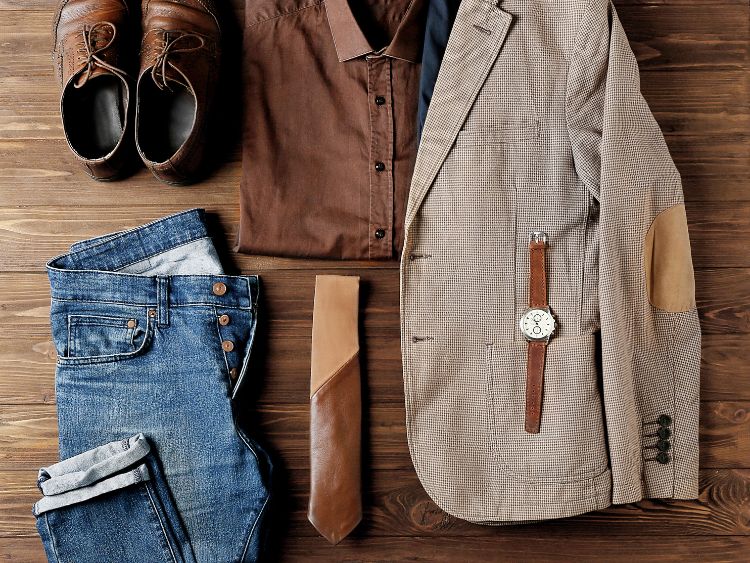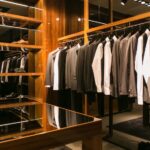The 1930s was a pivotal era in fashion history, marked by a significant shift from the extravagant styles of the 1920s to more refined and sophisticated looks. The Great Depression was in full swing, and fashion adapted accordingly. However, this decade was not solely defined by economic hardships; it was also a time of innovation, elegance, and Hollywood glamour. From everyday wear to evening gowns, 1930s fashion continues to inspire designers and fashion enthusiasts today. So, let’s dive deep into what made the 1930s such an iconic time for fashion.
The Influence of the Great Depression
With the onset of the Great Depression, practicality became a fashion necessity. Fabrics were chosen for their durability, and elaborate designs were replaced with sleek, simple silhouettes. Women still desired elegance, but clothing became more about function than luxury. You might think that fashion during this period would be completely dreary, but that’s far from the truth!
Women’s Fashion: A Blend of Practicality and Glamour
One of the most notable aspects of 1930s fashion was the shift toward softer, more feminine styles compared to the previous decade. Here’s a breakdown of the key elements:
1. The Silhouette
The tubular, boyish silhouette of the 1920s gave way to a more fitted, feminine figure. Dresses in the 1930s emphasized natural curves, with defined waists and flowing skirts. This decade reintroduced the hourglass shape, creating an elegant and refined look that contrasted with the flapper fashion of the ’20s.
2. Evening Gowns
Hollywood heavily influenced evening wear, and glamorous gowns became the epitome of sophistication. Flowing fabrics like satin, silk, and velvet were popular, often draping gracefully from the shoulders and cinching at the waist. Bias-cut gowns, popularized by designers like Madeleine Vionnet, clung to the body’s natural curves, making them a favorite among celebrities and socialites.
3. Daywear
For day-to-day wear, 1930s fashion leaned toward practicality without sacrificing style. Women’s day dresses typically had a simple design, often featuring puffed sleeves, narrow waists, and A-line skirts that reached mid-calf. Prints, especially floral patterns, were also common in daywear.
Hollywood’s Golden Age: A Fashion Revolution
It’s impossible to talk about 1930s fashion without mentioning Hollywood’s Golden Age. Movie stars like Greta Garbo, Jean Harlow, and Marlene Dietrich set fashion trends that women across the globe emulated. Cinema became a form of escapism during tough economic times, and women idolized the glamorous looks seen on the silver screen.
- Greta Garbo’s tailored suits and androgynous style paved the way for women to experiment with menswear-inspired looks.
- Jean Harlow’s iconic bias-cut gowns embodied the ultimate in eveningwear elegance, influencing women to seek glamorous, figure-hugging dresses.
- Marlene Dietrich, known for her bold, gender-defying fashion choices, famously wore tuxedos and suits, blending femininity with masculine elements.
Hollywood’s influence extended beyond women’s fashion—men also began adopting more polished, refined looks inspired by film stars like Cary Grant and Clark Gable.
Men’s Fashion: Tailored and Timeless
While women’s fashion in the 1930s was all about curves and femininity, men’s fashion leaned into structure and formality. Here are the key trends that defined men’s style during this time:
1. Suits and Outerwear
Men’s suits in the 1930s were characterized by wide shoulders, tapered waists, and straight, slightly looser pants. Double-breasted suits were especially popular, often paired with wide lapels and a fedora hat to complete the look. For outerwear, trench coats and long wool overcoats were common, providing both warmth and style.
2. The Tuxedo
The tuxedo evolved during the 1930s, becoming a standard for formal events. Silk lapels, bow ties, and patent leather shoes completed the black-tie ensemble. This decade cemented the tuxedo as a timeless, essential piece for men’s formal fashion.
3. Casual Wear
Believe it or not, the 1930s saw the rise of more relaxed casual wear for men, especially during leisure time. Sweaters, high-waisted trousers, and soft-collared shirts became part of the modern man’s wardrobe, striking a balance between comfort and style.
Fabrics and Patterns of the 1930s
Even though the Great Depression affected how much people spent on clothes, it didn’t mean they skimped on creativity. Here’s a look at the fabrics and patterns that defined 1930s fashion:
- Fabrics: Silk, satin, and velvet were the fabrics of choice for formal attire, while cotton and wool were more common in daywear. For men, tweed became a staple, especially for outdoor clothing and suits.
- Patterns: Bold prints became popular, especially florals for women’s dresses. Checks, stripes, and plaids were also used in men’s suits and outerwear.
Accessories: The Final Touch
No 1930s outfit was complete without the right accessories. Both men and women paid close attention to the finishing touches of their outfits. Let’s take a closer look at the must-have accessories of the time:
1. Hats
Hats were an essential part of both men’s and women’s fashion in the 1930s. Women wore cloche hats, berets, and wide-brimmed hats to complete their outfits, while men favored fedoras, newsboy caps, and bowlers.
2. Gloves
Gloves were worn on almost all occasions, especially by women. Whether for formal evening events or casual daytime outings, gloves added a touch of sophistication to any outfit.
3. Footwear
For women, T-strap and Mary Jane shoes were incredibly popular. These shoes often had low heels and were perfect for both day and evening wear. Men typically wore Oxford shoes, with their sleek design and polished leather, making them a staple in men’s wardrobes.
FAQs about 1930s Fashion
- What was the most iconic look of 1930s fashion?
The bias-cut evening gown was arguably the most iconic look, representing Hollywood glamour and high fashion during the decade. - How did the Great Depression influence fashion in the 1930s?
The Great Depression led to more practical and affordable fashion choices. While luxury materials and designs were still coveted, people opted for durable fabrics and timeless styles that could last longer. - Did men’s fashion change significantly during the 1930s?
Yes, men’s fashion evolved during the 1930s to embrace more structured suits and casual wear. Tailored suits with wide shoulders became the norm, while more relaxed clothing emerged for leisure time. - What accessories were popular in the 1930s?
Hats, gloves, and sleek shoes were essential accessories during the 1930s. Both men and women incorporated these items into their everyday wardrobes.
Conclusion
The 1930s fashion era was one of resilience, glamour, and innovation. Despite the challenges of the Great Depression, people found ways to stay stylish, drawing inspiration from Hollywood and embracing timeless designs. The silhouettes, fabrics, and accessories from this period have left a lasting legacy, influencing modern fashion in ways that are still evident today.
Authoritative Links:
- www.fashionhistorytimeline.com/1930s-fashion
- www.vogue.com/article/1930s-hollywood-fashion
- www.britannica.com/fashion-in-1930s





